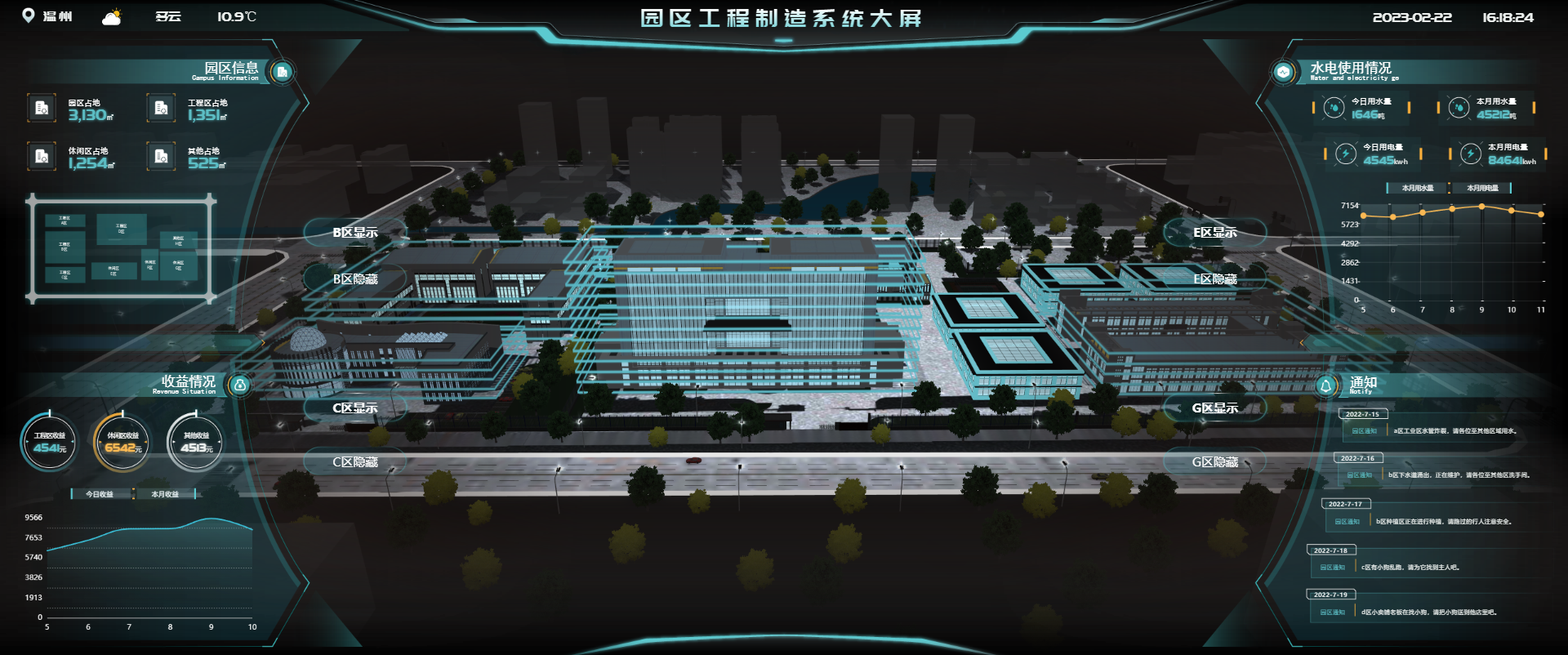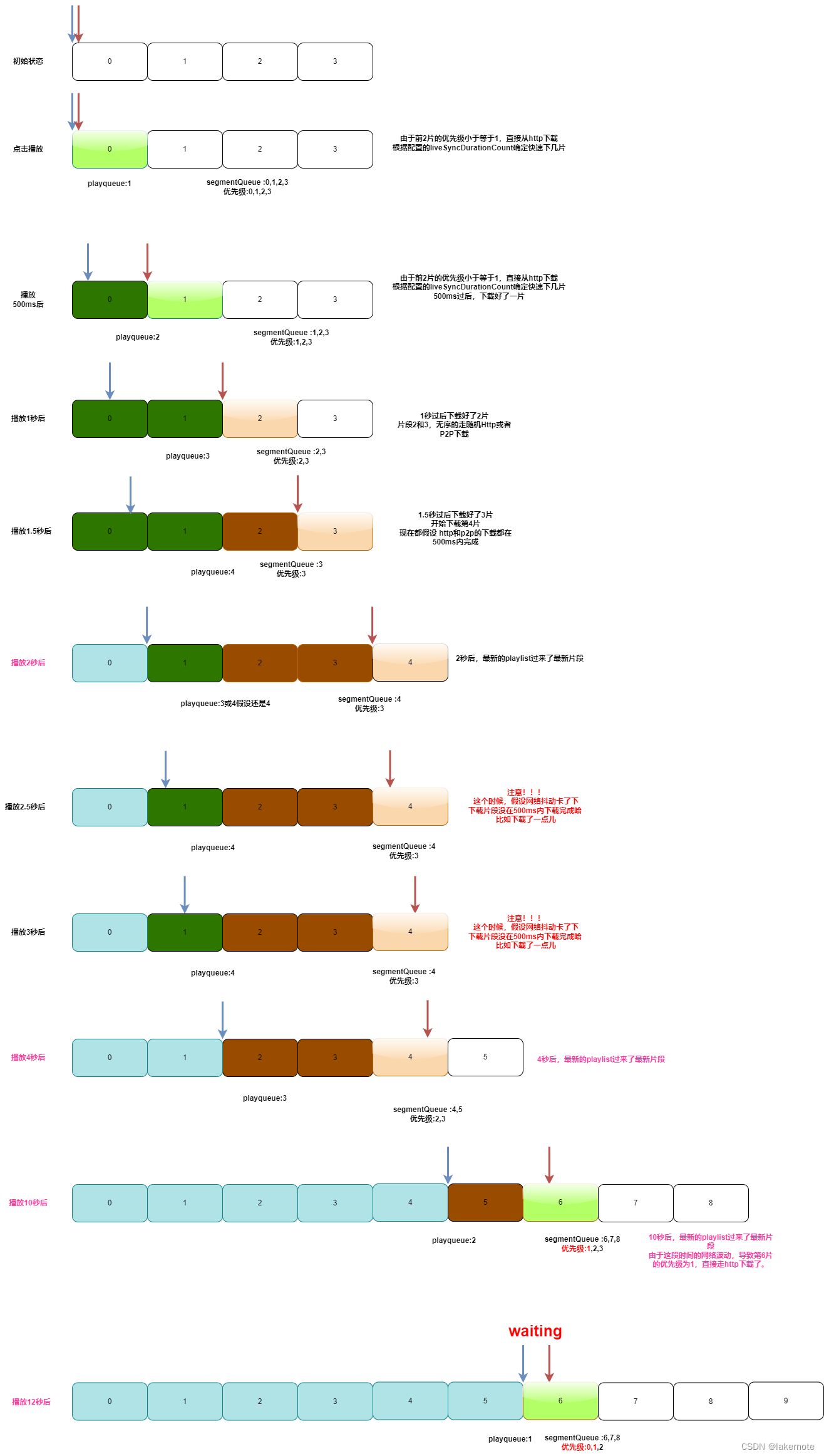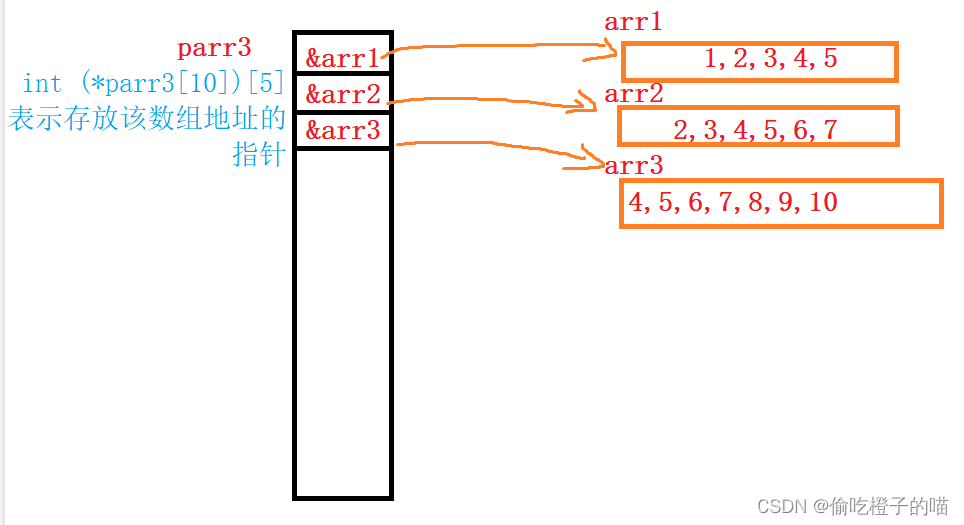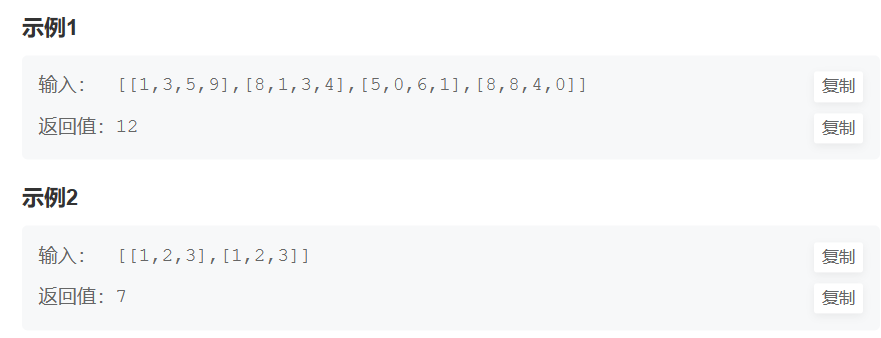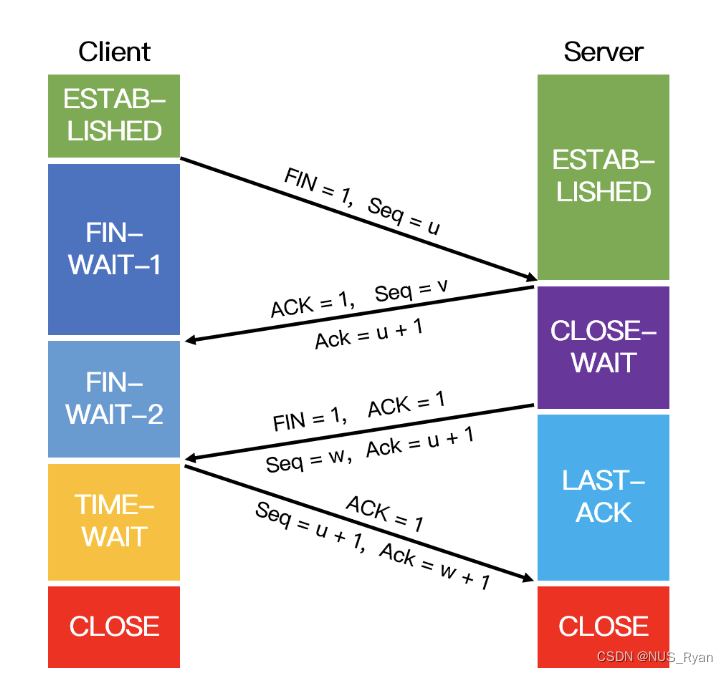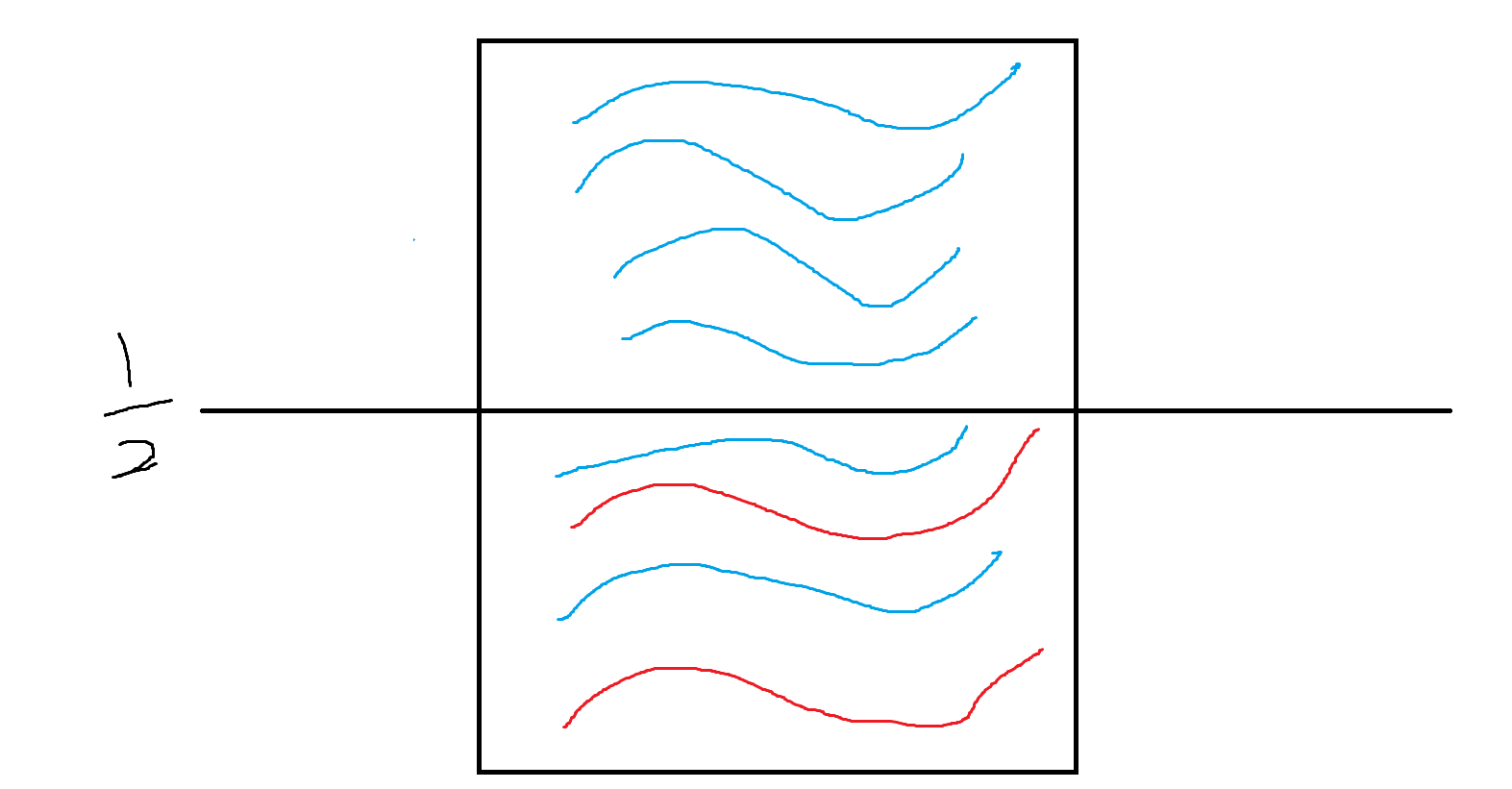设计你的循环队列实现。 循环队列是一种线性数据结构,其操作表现基于 FIFO(先进先出)原则并且队尾被连接在队首之后以形成一个循环。它也被称为“环形缓冲器”。
循环队列的一个好处是我们可以利用这个队列之前用过的空间。在一个普通队列里,一旦一个队列满了,我们就不能插入下一个元素,即使在队列前面仍有空间。但是使用循环队列,我们能使用这些空间去存储新的值。
你的实现应该支持如下操作:
1、MyCircularQueue(k): 构造器,设置队列长度为 k 。
2、Front: 从队首获取元素。如果队列为空,返回 -1 。
3、Rear: 获取队尾元素。如果队列为空,返回 -1 。
4、enQueue(value): 向循环队列插入一个元素。如果成功插入则返回真。
5、deQueue(): 从循环队列中删除一个元素。如果成功删除则返回真。
6、isEmpty(): 检查循环队列是否为空。
7、isFull(): 检查循环队列是否已满。
示例:
MyCircularQueue circularQueue = new MyCircularQueue(3); // 设置长度为 3
circularQueue.enQueue(1); // 返回 true
circularQueue.enQueue(2); // 返回 true
circularQueue.enQueue(3); // 返回 true
circularQueue.enQueue(4); // 返回 false,队列已满
circularQueue.Rear(); // 返回 3
circularQueue.isFull(); // 返回 true
circularQueue.deQueue(); // 返回 true
circularQueue.enQueue(4); // 返回 true
circularQueue.Rear(); // 返回 4
提示:
1、所有的值都在 0 至 1000 的范围内;
2、操作数将在 1 至 1000 的范围内;
3、请不要使用内置的队列库。
思路:
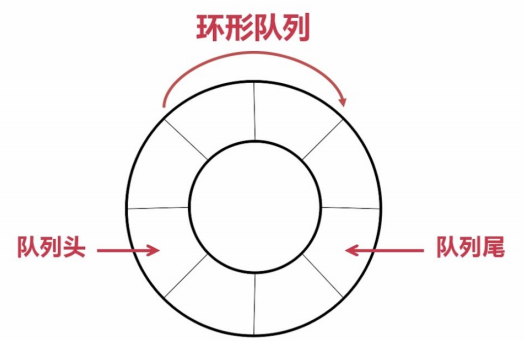
数组下标循环的小技巧
1. 下标最后再往后(offset 小于 array.length): index = (index + offset) % array.length
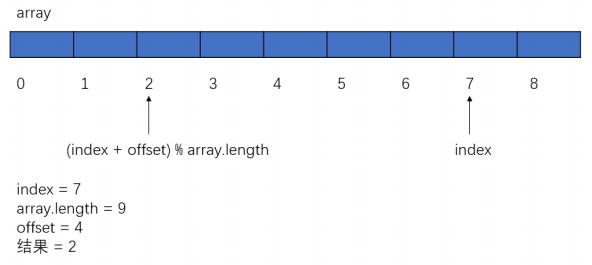
2. 下标最前再往前(offset 小于 array.length): index = (index + array.length - offset) % array.length

如何区分空与满
1. 通过添加 size 属性记录
2. 保留一个位置
3. 使用标记
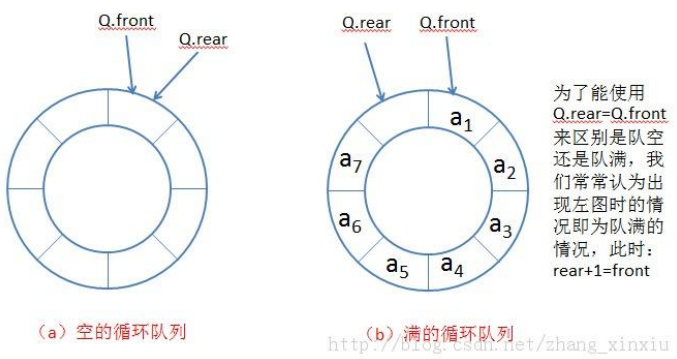
代码:
class MyCircularQueue {
public int front;//队头下标
public int rear;
public int[] elem;
//构造方法,k 队列的长度
public MyCircularQueue(int k) {
this.elem=new int[k+1];
}
//入队
public boolean enQueue(int value) {
if (isFull()){
return false;
}
this.elem[rear]=value;
this.rear=(this.rear+1)%this.elem.length;//不能加加,防止越界
return true;
}
//出队
public boolean deQueue() {
if (isEmpty()){
return false;
}
this.front=(this.front+1)%this.elem.length;
return true;
}
//获取队头元素
public int Front() {
if (isEmpty()){
return -1;
}
return this.elem[this.front];
}
//获取队尾元素
public int Rear() {
if (isEmpty()){
return -1;
}
int index=-1;
if (this.rear==0){
index=this.elem.length-1;
}else {
index=this.rear-1;
}
return this.elem[index];
}
public boolean isEmpty() {
return this.front==this.rear;
}
public boolean isFull() {
if ((this.rear+1)%this.elem.length==this.front){
return true;
}
return false;
}
}


